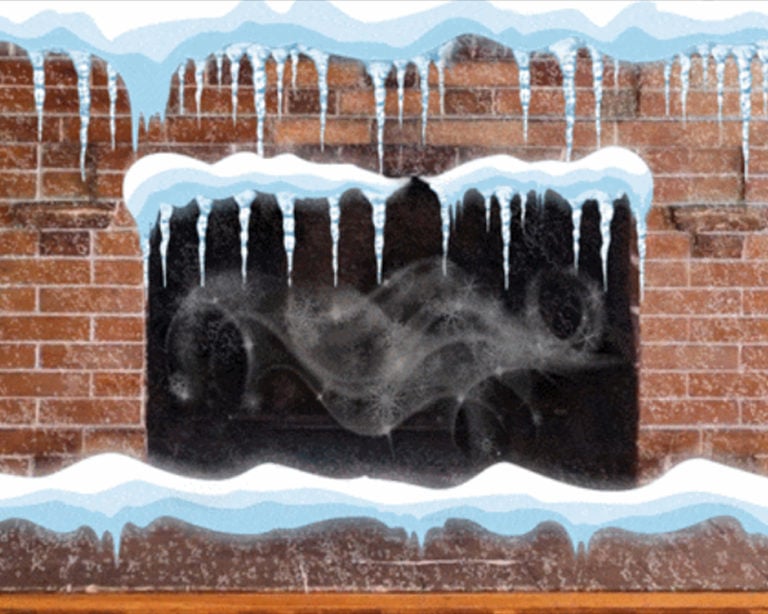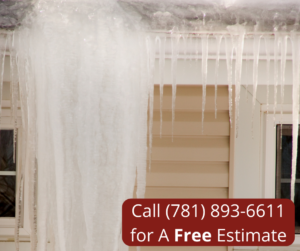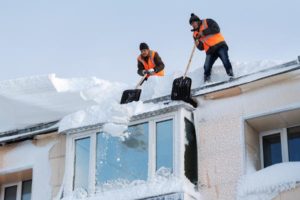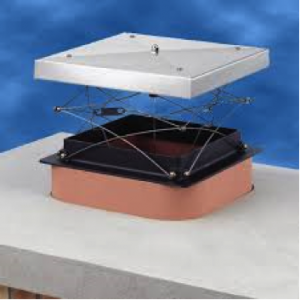Why Does the Fireplace Let Cold Air into the Home?

Whenever we think of a cold winter’s day, our minds drift to a warm fireplace. There’s nothing like sitting in an oversized chair with my favorite ‘drink’ while I close my eyes to enjoy the warmth and crackling sound of the fire. The fireplace can certainly serve as a place of solace and relaxation. Clearly, we don’t want anything to mess that up.
What’s that Chill?
There’s always something to challenge ‘me’ time. In this instance, it was a cold draft. When the fire is out in your woodburning or gas fireplace there’s an opportunity for cool or cold air to enter into your home. That’s because the fireplace and chimney are another opening or entry to the outside, similar to a window or door.
Air Pressure
We all know that warm air rises and cold air sinks – Heated air has lower density than cold air, so the warm buoyant air in your house wants to rise and leak out of your home through any gaps or inefficiencies… and through the roof. There are pathways in the upper levels & roof elements which allow the warm rising room-air to escape out of your house. All the while, cold heavy outside air comes in through lower gaps and inefficiencies (like the fireplace). Warm air rises up and leaks out of your house while cold replacement air, from outside, will flow in through lower pathways in the lower levels.
What can cause the air pressure to change?
- Wind: and we have plenty of it
- Temperature: what is the temperature outside vs inside the home
- Structure Thermal Envelope: meaning how airtight is the home in regards to windows, doors, insulation, etc.
- Height of the chimney
The modern damper is located outside of the home and on top of the chimney. It helps to seal in heat, minimizes any wind downdrafts, and seals out rain, snow. If you have a damper, check if it is closed. If it is, then the seal is not tight and the damper needs to be checked. If you notice that it’s open, close it right away. Then check if cold air continues to make its way inside.
Getting Too Complicated!
It’s cold. There’s a draft. Air pressure isn’t helping. Got it.
What can be done to fix the problem? First, contact Superior Chimney at 877.244.6349. Certified Technicians confront this issue all the time. They will be able to evaluate and diagnose the problem and put a stop to the cold air from entering your home.
This post first appeared on https://www.superiorchimney.net




 er been used, it will also pull down odor from the residue inside. We now also have other mechanical influences to contend with. A big fancy kitchen range hood sounds like a great idea, but you might be in for a smokey surprise if you run it when you’re having a fire. This also happens to fireplaces that may never have had an issue with draft before. It’s usually a combination of upgrades throughout the home that can contribute to a reverse draft. Luckily, there are solutions available for those who experience this pesky problem.
er been used, it will also pull down odor from the residue inside. We now also have other mechanical influences to contend with. A big fancy kitchen range hood sounds like a great idea, but you might be in for a smokey surprise if you run it when you’re having a fire. This also happens to fireplaces that may never have had an issue with draft before. It’s usually a combination of upgrades throughout the home that can contribute to a reverse draft. Luckily, there are solutions available for those who experience this pesky problem.
 us. Calling now can get you in queue with an early Spring repair as soon as the weather allows.
us. Calling now can get you in queue with an early Spring repair as soon as the weather allows.